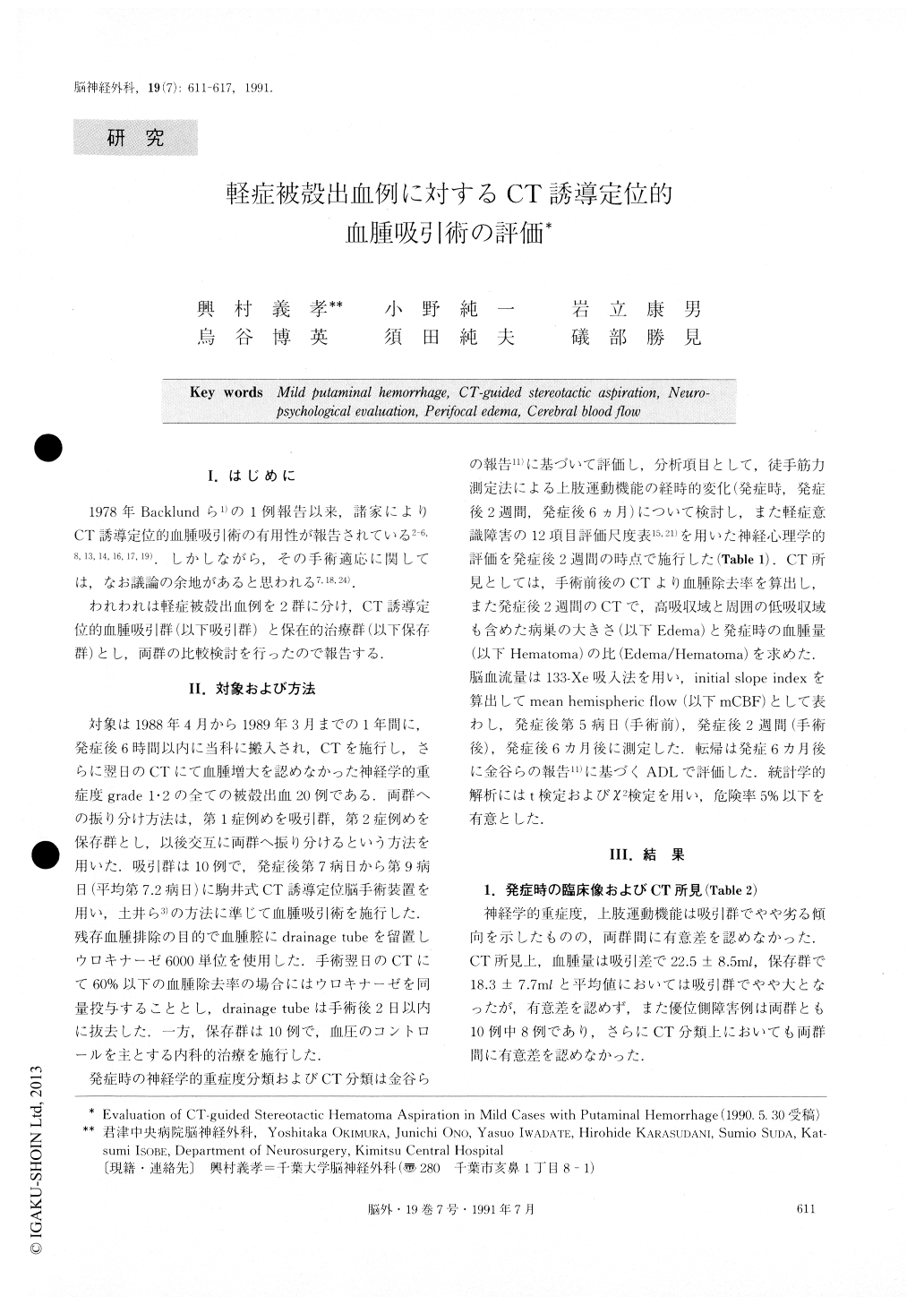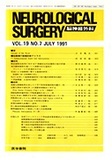Japanese
English
- 有料閲覧
- Abstract 文献概要
- 1ページ目 Look Inside
I.はじめに
1978年Backlundら1)の1例報告上次来,諸家によりCT誘導定位的血腫吸引術の有用性が報告されている2-6,8,13,14,16,17,19).しかしながら,その手術適応に関しては,なお議論の余地があると思われる7,18,24).
われわれは軽症被殻出血例を2群に分け,CT誘導定位的血腫吸引群(以下吸引群)と保在的治療群(以下保存群)とし,両群の比較検討を行ったので報告する.
Abstract
Reported here is the effectiveness of surgical man-agement in mild cases with putaminal hemorrhage (neu-rological grading 1 or 2, described by Kanaya, et al.).
Ten cases were treated by CT-guided stereotactic hematoma aspiration (aspiration group) , and another 10 cases were treated by only medical therapy (conser-vative group) . The mean interval from the onset to op-eration was. 7.2 clays. In both groups, serial change in the motor function of the upper extremity was ex-amined and the neuropsychological function was also evaluated at 2 weeks after onset. Perifocal low-density area around the hematoma was estimated on CT scan at 2 weeks after onset. Mean hemispheric cerebral blood flow (mCBF) was measured at 5-clays, 2 weeks and 6 months after onset, respectively in each group. The activity of daily life (ADL) was evaluated at 6 months after onset.
There was no statistically significant difference in age, neurological grading and CT findings on admis-sion between the 2 groups. At 2 weeks after onset, no case had deteriorated in motor function in the aspira-tion group. On the other hand, 2 cases had deteriorated in the conservative group. The neuropsychological function was considerably improved in the majority of cases in the aspiration group. Perifocal low area was significantly narrow on CT scan in the aspiration group. At 2 weeks after onset, the mCBF of the affected side was 53.8 ± 6.0 ml/100g/min in the aspi-ration group, whereas it was 42.0 ± 5.7 ml1/100g/min in the conservative group. This difference was statisticallysignificant. In spite of these favorable results in the aspiration group, the ADL at 6 months after onset was the same in both groups (ADI. I & II : 70%).
These results suggested that CT-guided stereotactic hematoma aspiration might be effective during theacute and subacute stage in the managment of mild cases with putaminal hemorrhage. The authors expect early ambulation in these cases, and a shorter hospita-lization period by this management.

Copyright © 1991, Igaku-Shoin Ltd. All rights reserved.


